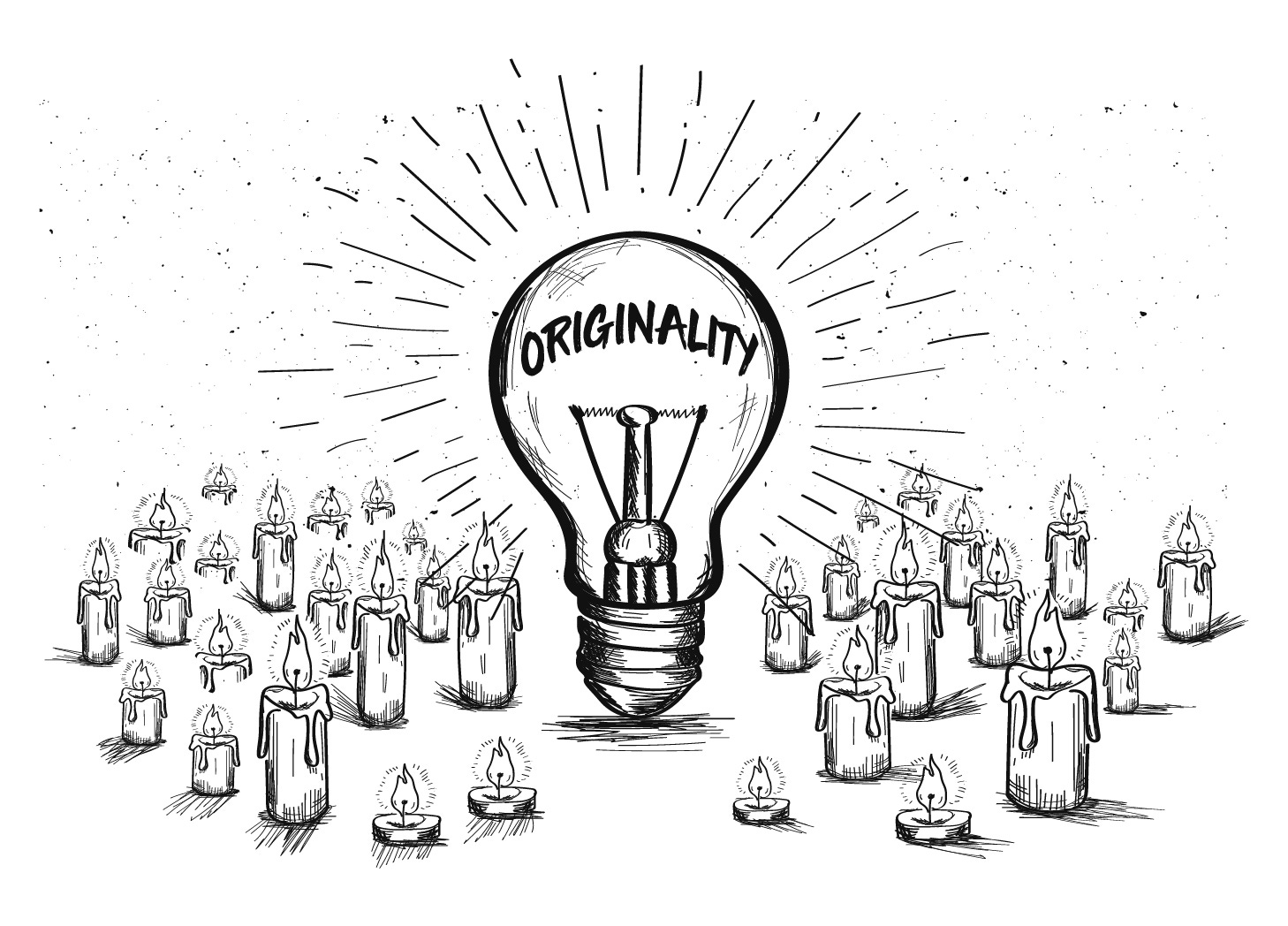[ad_1]
Enhance your expertise with Development Memo’s weekly professional insights. Subscribe for free!
Google introduced a -40% discount of low-quality, unoriginal content material with the most recent core replace.
Primarily based on our evaluations, we anticipate that the mixture of this replace and our earlier efforts will collectively cut back low-quality, unoriginal content material in search outcomes by 40%.
Why not -100%? There are only a few options: the remaining 60% are very ambiguous, meaning it’s hard to differentiate between high and low quality, or there simply isn’t enough high quality to replace low-quality content.
It’s not a problem of knowing. If Google knows what 40% is, they know 100%. What if the open web simply doesn’t have enough good content anymore?
SERP Fluffyfication
The announcement says to “reduce unoriginal content in search results.” This is the first time I recognized Google using the word “original” in context with “quality.” I like the word because it really describes what most SERPs look like these days.
Most search content is unoriginal. The problem isn’t that content is optimized for search but that it’s optimized in a lazy way. Google doesn’t crave fast food.
And many users have reached saturation as well.
When people say, “You can’t find anything on Google these days,” they don’t mean, “Google doesn’t show search results for my query.”
They mean, “Google’s long-tail results are really bad, and Google shows me mostly fluff.”
That “fluff,” poorly done listicles or skyscraper articles, has worked so far, but it damages Google’s user experience. The SERPs need more substance, which is what the current Core update is about.
Unoriginal content = anything you can answer with common sense.
Original content = anything counter to common sense, exceeding expectations, or high complexity explained in an easy way.
Many clients I work with want more organic traffic, but they don’t want to create “SEO content.”
Google’s (core) algorithms are constantly evolving, but the mechanics behind blue links have been static enough for SEOs to figure out the winning formula.
Since Google search is a zero-sum game with a clear winning formula, the majority of content converges towards an optimum, which means it looks the same.
Example 1
For the query “how to create a strategy,” Google shows results in a mix of company blogs, social posts, and university (Harvard) articles in the top 10.
Most articles are very repetitive, as you can see in the screenshot below, where I compared the headings of the top 3 results.
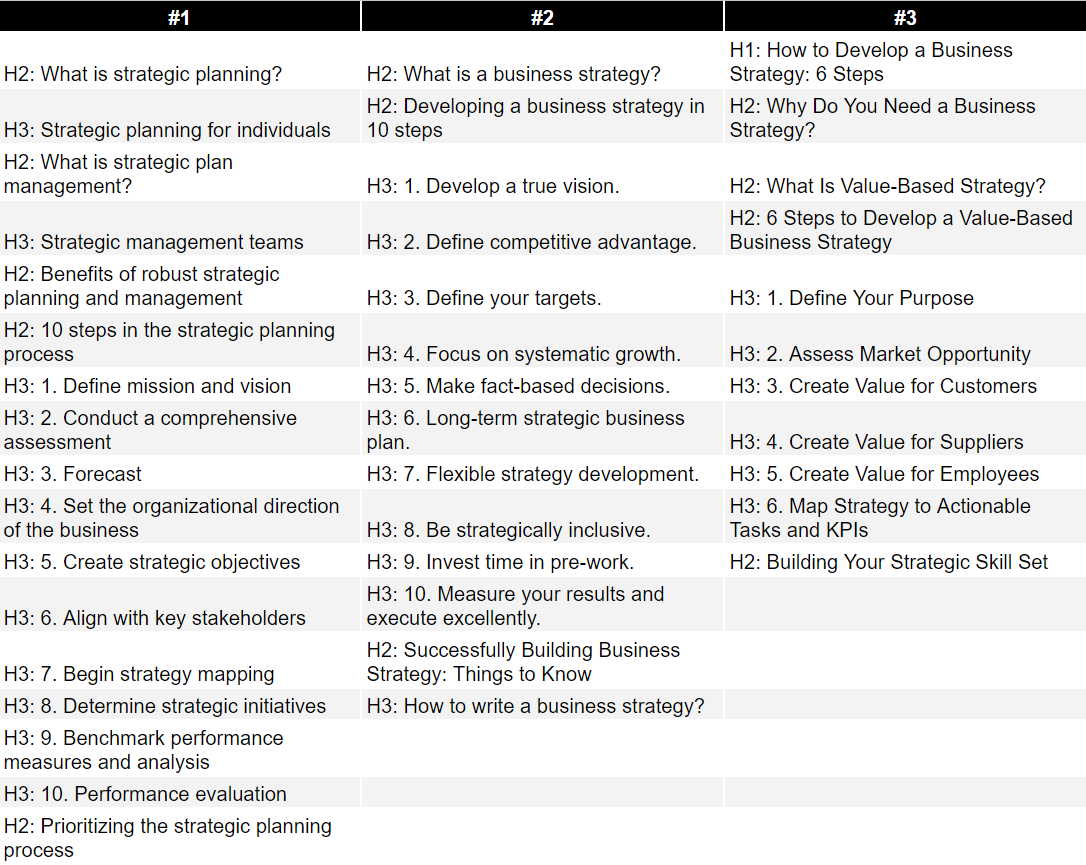 Headings of the top 3 results for “how to create a strategy” indicate fluffyness (Image Credit: Kevin Indig)
Headings of the top 3 results for “how to create a strategy” indicate fluffyness (Image Credit: Kevin Indig)On top of that, they’re not helpful.
Vision and mission, for example, are not part of a strategy. Neither is forecasting.
Some articles suggest running a SWOT analysis however fail to clarify that SWOTs have to be geared in direction of a selected downside – which, by the way in which, is the unique place to begin for any technique. However no article within the high 5 even mentions the phrase “downside” a single time. This content material wouldn’t have handed an MBA.
On the identical time, good content material doesn’t rank as a result of it’s not optimized for search.
An awesome instance is Packy McCormick’s “In protection of technique.”
The piece explains how to create a strategy, cleans up common assumptions, is well-written, and based on first-hand experience. In other words, it’s original. But Google doesn’t rank it for anything because the title isn’t optimized, internal linking could be stronger, and it might not hit the right embeddings.
McCormick has done what Google wants: Focus on creating good content for users. But Google doesn’t reward him with organic traffic. Instead, it sends traffic to articles that hit the winning formula – and that’s part of the problem.
Example 2
Another example is the query “how to build a community.”
I want to show a few screenshots of the top results. Can you spot the fluff? Many words, little substance.
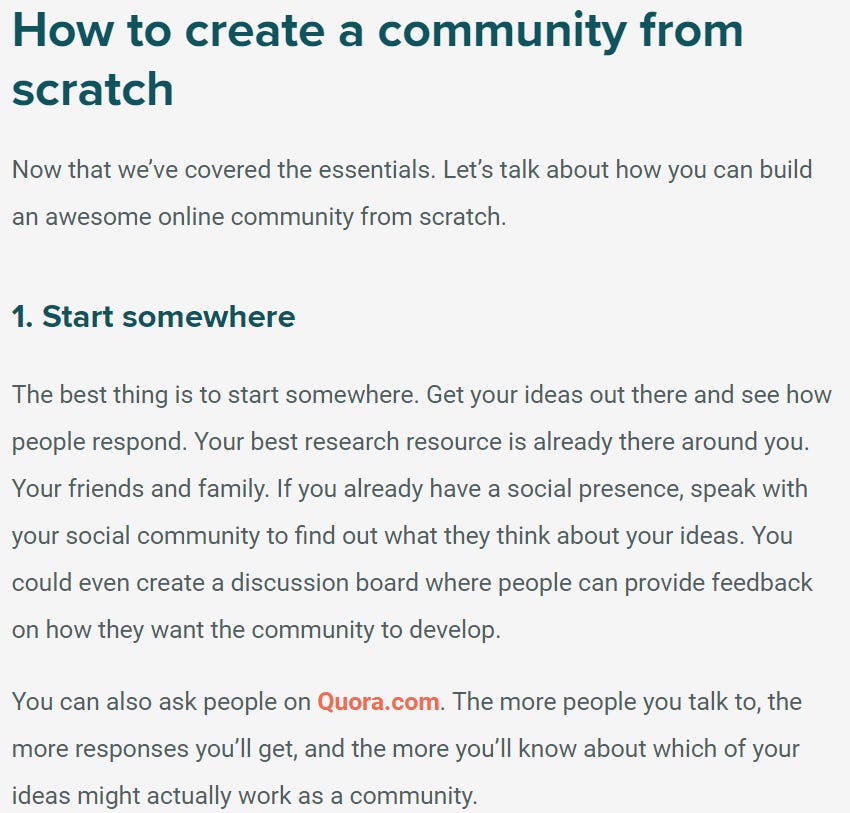 Image Credit: Kevin Indig
Image Credit: Kevin Indig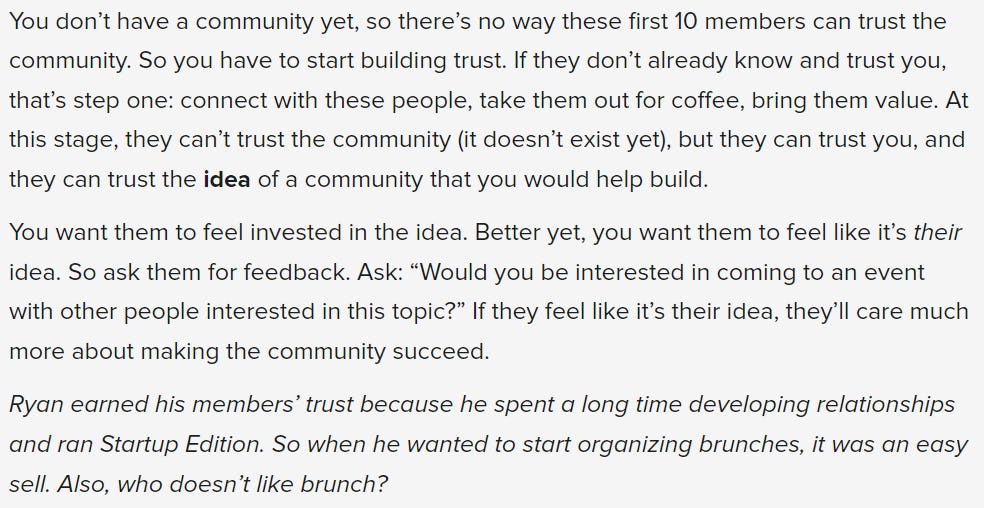 Image Credit: Kevin Indig
Image Credit: Kevin Indig Image Credit: Kevin Indig
Image Credit: Kevin Indig Image Credit: Kevin Indig
Image Credit: Kevin Indig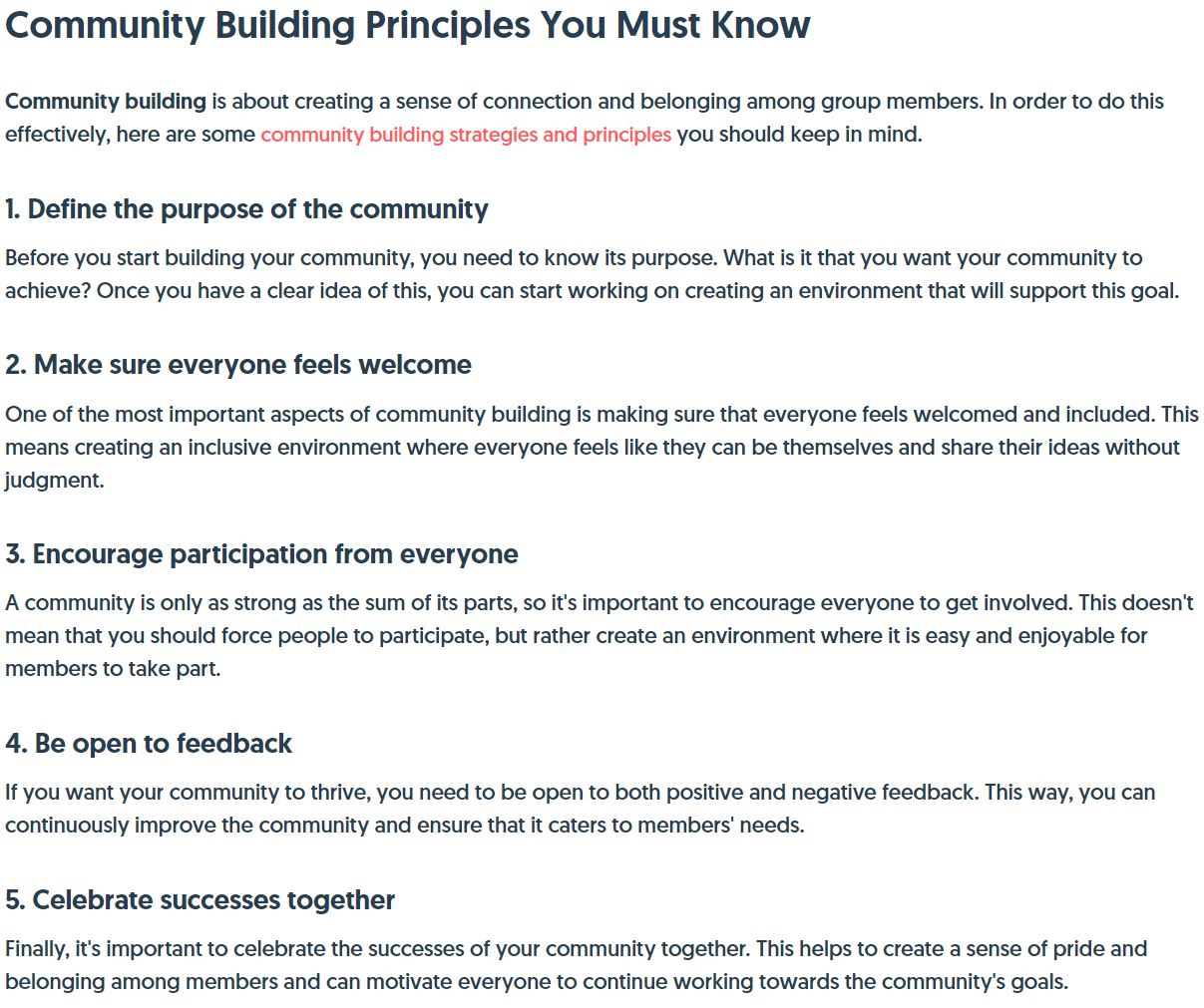 Image Credit: Kevin Indig
Image Credit: Kevin Indig(I don’t want to pose. My writing skills are merely good enough to spot bad writing. But I aim to have a high density of insights per word.)
Once again, we can tell by the headings how little substance most articles in the top 3 positions have.
 Image Credit: Kevin Indig
Image Credit: Kevin IndigOne article in the top 10 results (No. 8) was written by someone who has built a community before – twice.
Unfortunately, the article doesn’t dive into why communities are important, what they are, and other sub-topics Google deems important. As a result, it doesn’t rank higher.
Where Is All The Good Content?
If the theory that Google doesn’t have enough good content to replace low-quality results holds true, experts have either ceased to create content or they’re creating it elsewhere.
I have a guess: Content creation capacity moved from text to video and audio. Instead of creating more blog content, business and consumer creators are creating more YouTube videos and podcasts.
That’s where the attention is. The number of podcast listeners has increased by 45% from 2018 to 2023 and doubled from 2013 to 2023. Over 30% of Individuals take heed to podcasts weekly.
Possibly Google reveals extra movies within the SERPs as a result of textual content outcomes merely aren’t pretty much as good.
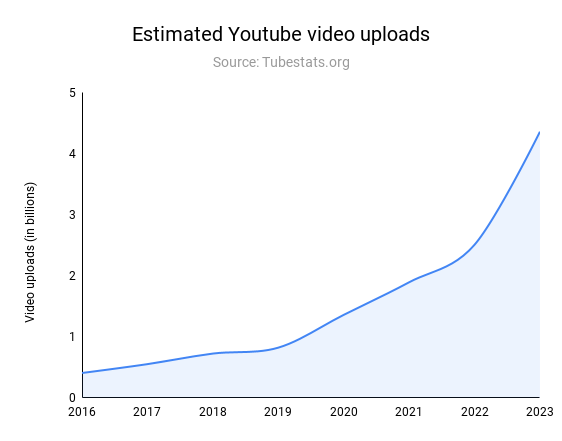 YouTube is exploding in measurement (Picture Credit score: Kevin Indig)
YouTube is exploding in measurement (Picture Credit score: Kevin Indig)It’s not only a B2B phenomenon; 66% discover brief video clips extra partaking than textual content. Shocked a lot? In all probability not. But it surely’s extra than simply the visible nature of video that makes a distinction right here. We put extra effort into video manufacturing as a result of it’s more durable and prices extra.
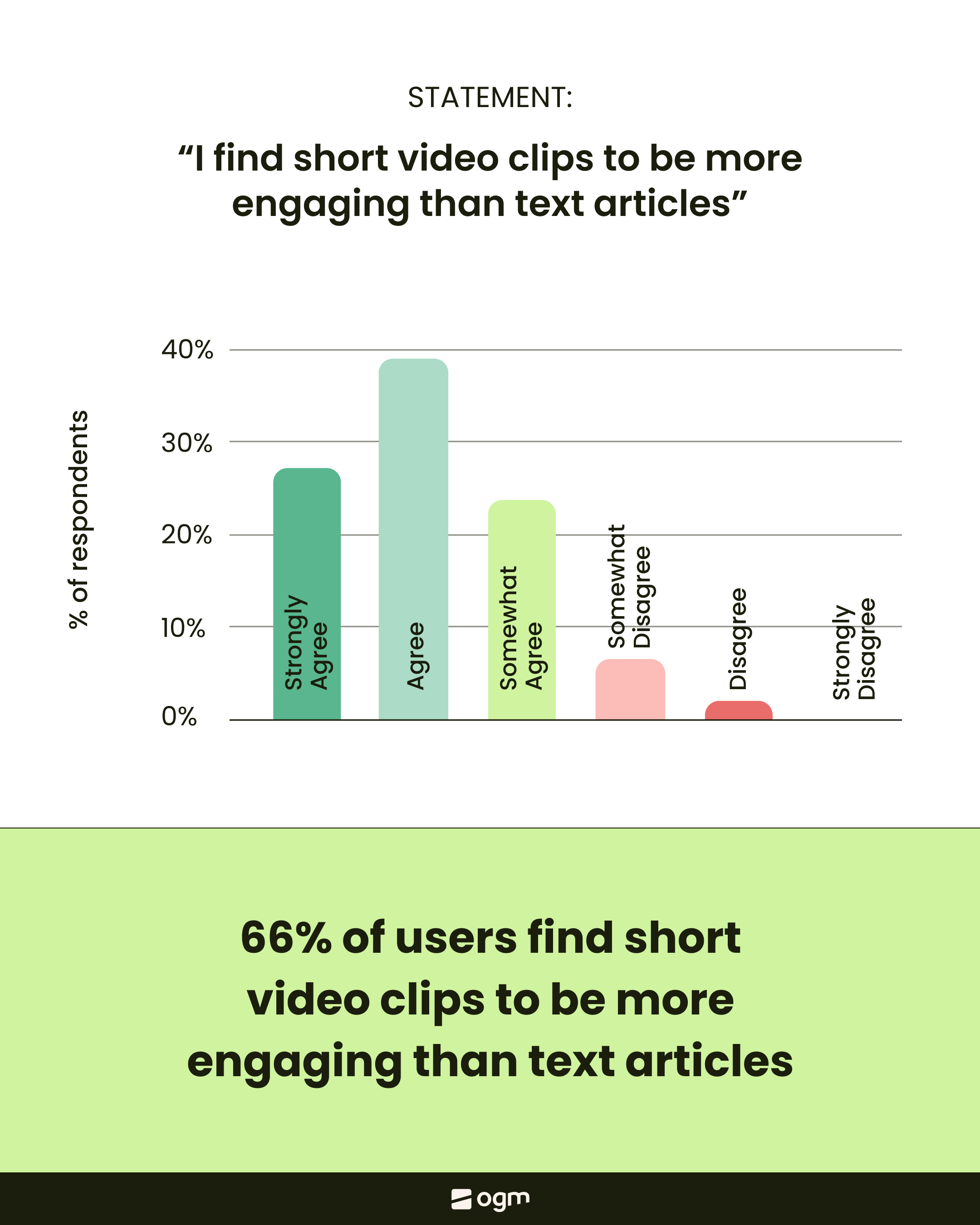 Customers are extra engaged by short-form movies than textual content (link)
Customers are extra engaged by short-form movies than textual content (link)And you’ll’t blame customers. The standard of content material is way increased.
For the search time period “easy methods to outline a technique,” the highest outcomes on YouTube are all older than one yr – one is even 14 years outdated. Video is way more durable to provide, so individuals put extra effort into it.
Since success on YouTube is so depending on engagement, low-quality productions don’t get many eyeballs.
Google has spent the final years getting higher at understanding content material to diversify away from counting on consumer alerts (keep in mind “we faux it”?).
From Elephant in the Room:
Our mannequin of what’s necessary in web optimization has been mistaken for a very long time. We thought content material was the premise, backlinks the center layer and consumer alerts sprinkled on high. It seems consumer alerts have been the premise, with a center layer of backlinks and content material understanding sprinkled on high.
Google would possibly simply now get higher at actually understanding content material high quality. Moreover with the ability to perceive phrase N-grams first after which embeddings and vectors later, it appears Google was by no means capable of perceive what good content material is with out consumer alerts.
Possibly what Google wants is much less content material understanding and a stronger emphasis on consumer alerts like YouTube.
Alternative
So, what’s the takeaway?
When competing with written content material, solely doing “what’s good for the consumer” merely isn’t sufficient. It’s good to discover a stability between writing for serps and writing for people.
Determine crucial sub-topics/embeddings/entities to cowl. Analyze the highest outcomes. Make it juice for Google. However don’t cease there. Don’t be lazy.
As soon as the web optimization stuff is taken care of, optimize for originality.
Ask your self what would actually make this piece stand out. Possibly unique analysis. Or discovering 5 individuals “who’ve performed it” and interviewing them. Or discovering a hard-to-get creator. No matter it’s, it must be troublesome to mimic.
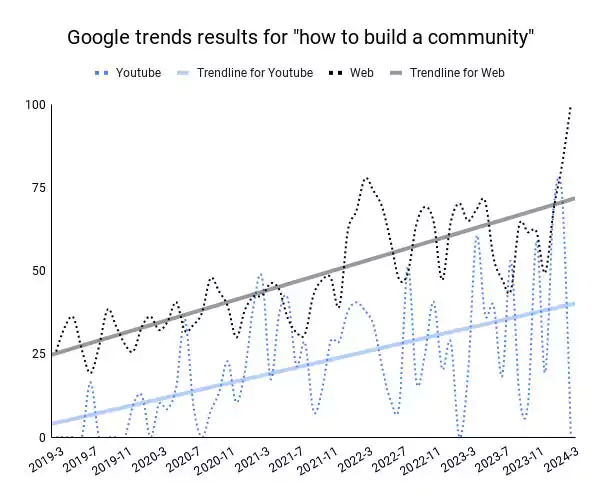 Excessive correlation between searches for a similar time period on the internet and YouTube (Picture Credit score: Kevin Indig)
Excessive correlation between searches for a similar time period on the internet and YouTube (Picture Credit score: Kevin Indig)Three extra issues:
- I’m talking at Recommerce in London on Friday (March fifteenth). Use code SPEAKERVIP to get 10% off your ticket! Should you’re round, electronic mail me again, and I’ll offer you one free ticket. First come, first served.
- I’m talking at Buddies of Search in Amsterdam on March twenty first. Come round and say hello!
- I’m talking at SaaStock in Austin, TX, on Might 14th and have two free tickets. To qualify, you’ll want to be there for the convention and love SaaS ;-). First come, first served.
https://blog.google/products/search/google-search-update-march-2024/
https://www.notboring.co/p/in-defense-of-strategy
Featured Picture: Lyna ™
[ad_2]
accepting guest posts contact us

📰 Karthic is a seasoned journalist and skilled writer passionate about uncovering compelling stories. With a knack for storytelling and a commitment to integrity, he covers diverse topics, from current affairs to human interest stories. Karthic’s writing is known for its engaging style and meticulous research. Connect with him for insightful perspectives on pressing issues! 📝
